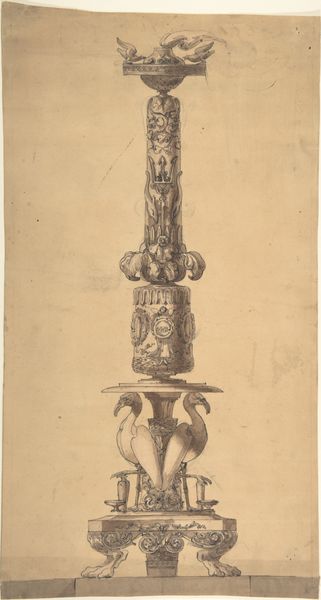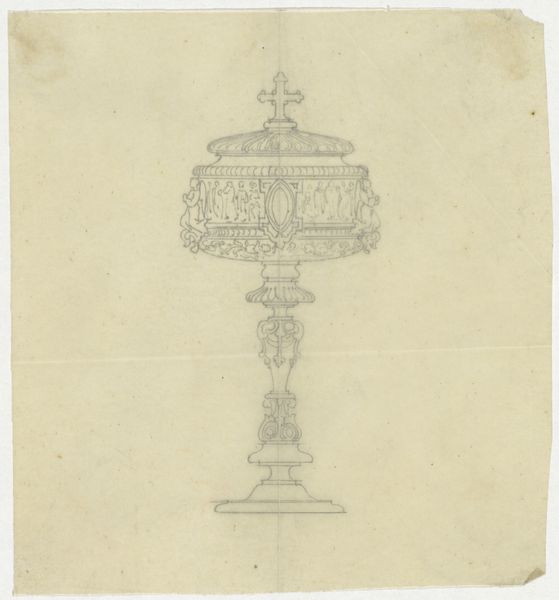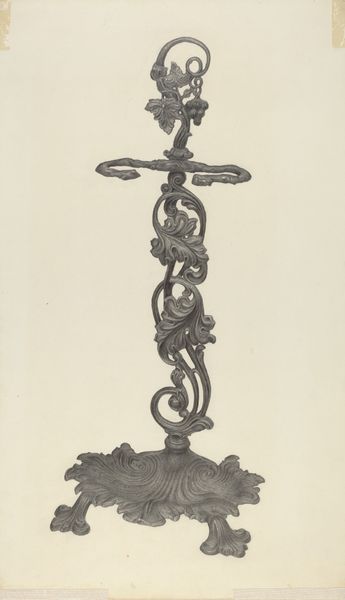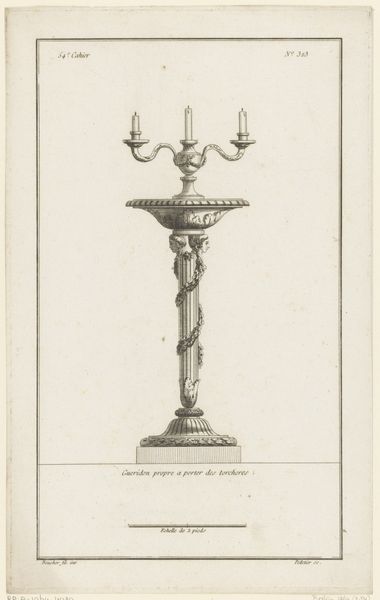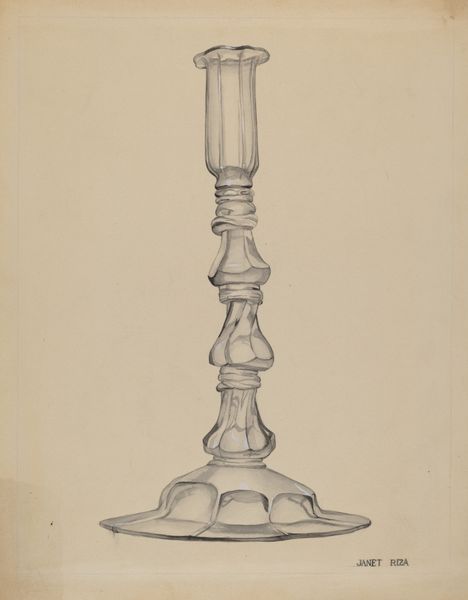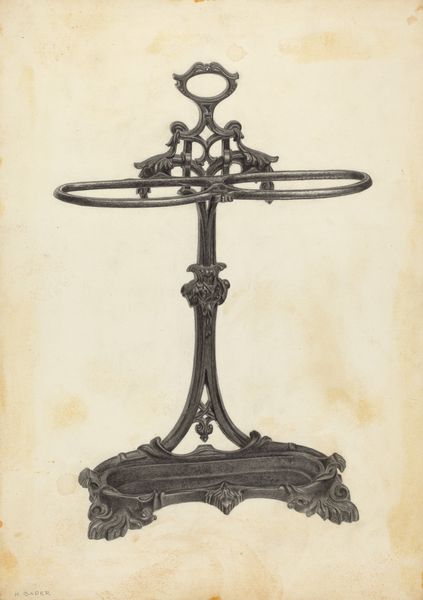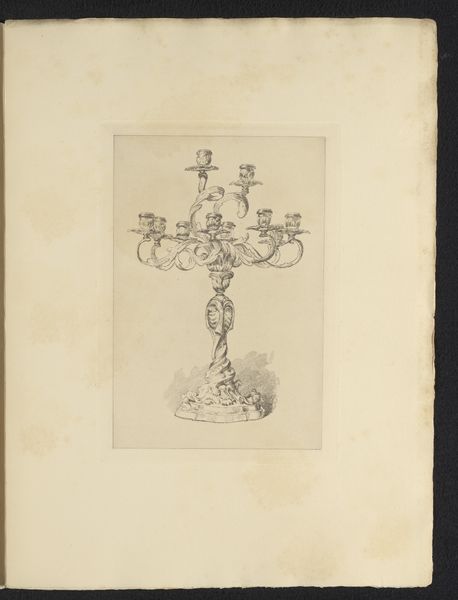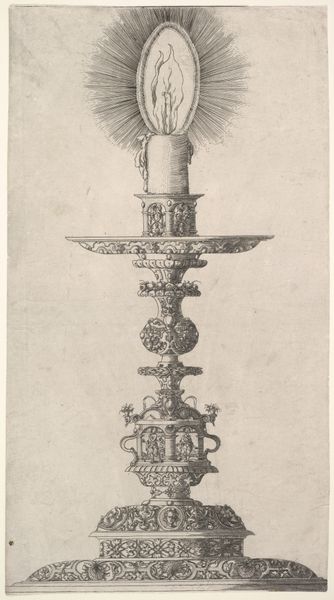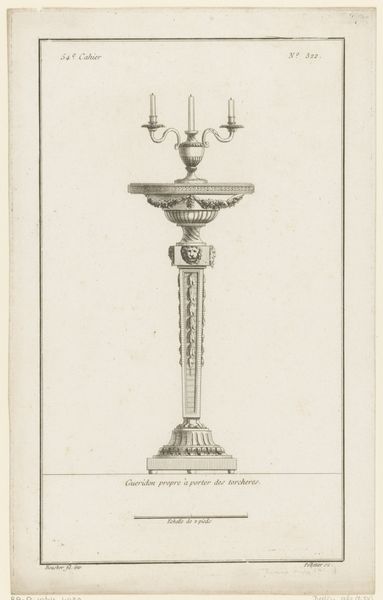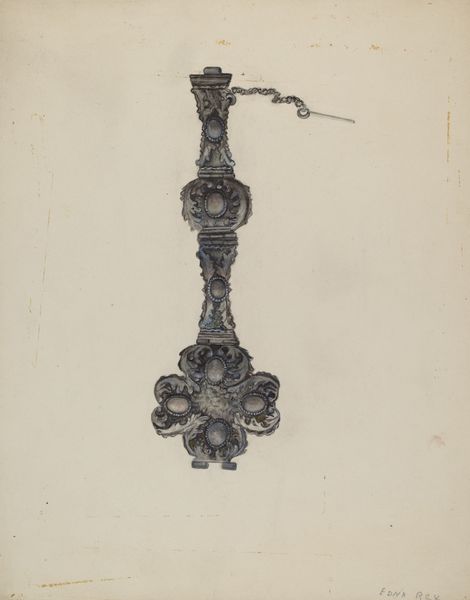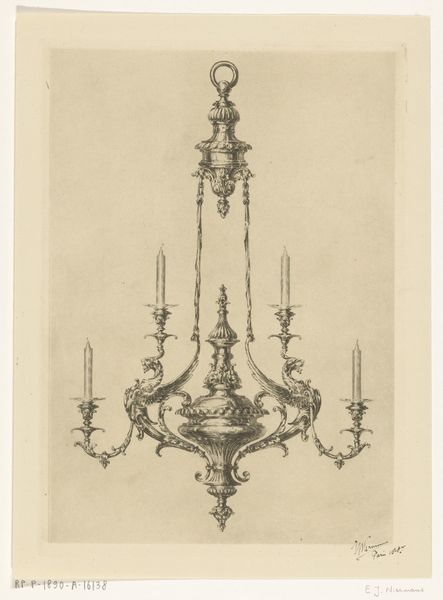
Design for a Fountain with a Shell Basin Supported by Three Dolphins and Surmounted by a Snake Spouting Water 1830 - 1860
0:00
0:00
drawing, print, pencil
#
drawing
#
neoclacissism
# print
#
landscape
#
form
#
pencil
Dimensions: sheet: 16 3/4 x 12 1/4 in. (42.5 x 31.1 cm)
Copyright: Public Domain
Curator: Here we have "Design for a Fountain with a Shell Basin Supported by Three Dolphins and Surmounted by a Snake Spouting Water," dating from about 1830 to 1860. This intriguing sketch is currently housed at the Metropolitan Museum of Art. Editor: Wow, what strikes me immediately is the fantasy and the symbolism. The swirling lines, the way the snake intertwines – it gives a sense of primordial power. Almost a challenge to traditional Neoclassical order. Curator: It’s rendered in pencil, ink and wash, which emphasizes its nature as a proposal. Consider the labor implied, the crafting of such a thing in stone or metal—who would benefit from its beauty and abundance? Was this meant for public access or private indulgence? Editor: Precisely. Fountains are never just fountains, right? This feels loaded, reflecting tensions of power. The snake can be a symbol of healing but also of disruption and danger; it is a potent figure here atop of that vertical axis. The shell, suggestive of Aphrodite. How does this connect to prevailing notions about beauty, social structures, the role of women during the period? Curator: The design clearly echoes Neoclassical styles popular then. We can also consider its consumption. It is after all just a design, existing on paper. So what did it mean for the artist and patron to possess the *idea* of such an elaborate piece? What’s the exchange there? Editor: The artist perhaps envisioned this space as a respite, an Eden-like sanctuary for some powerful entity? It contrasts sharply with realities. But there's the labor involved too, perhaps exploiting the workforce building them? How does a luxury object serve as a distraction, or a symbol that can promote specific messages about cultural refinement while inequalities fester. Curator: These designs serve as records of artistic labor, yes, documenting skill but also material constraints. Examining the artistic process alongside the object can teach us much about not just the beauty, but its context in 19th century design and manufacturing systems. Editor: Absolutely. Ultimately, its artistic process reveals a blueprint of social ideals too, consciously and unconsciously mirroring its biases. It gives an entryway to questioning values about beauty, about status, about who it included. Curator: A design brimming with implications and questions of materiality beyond its beautiful surfaces. Editor: Agreed. An echo through time, compelling us to dig deeper and see.
Comments
No comments
Be the first to comment and join the conversation on the ultimate creative platform.
